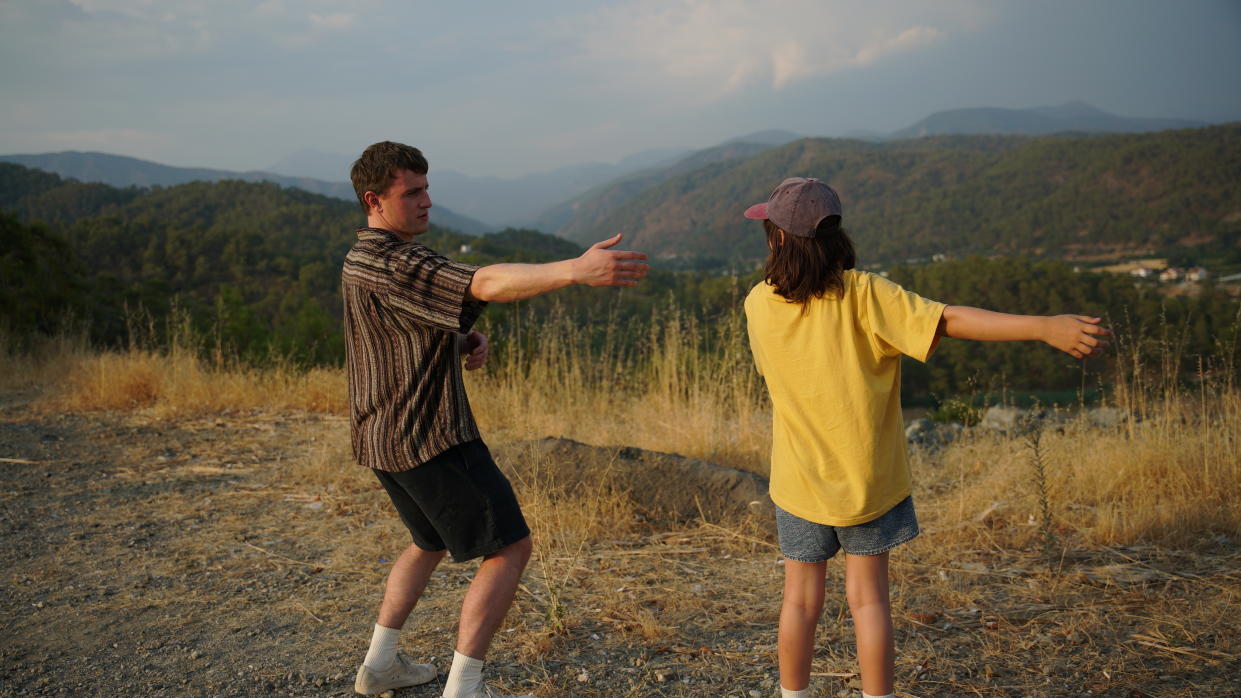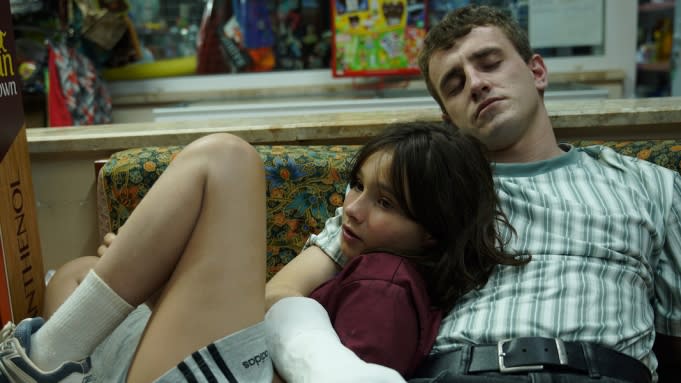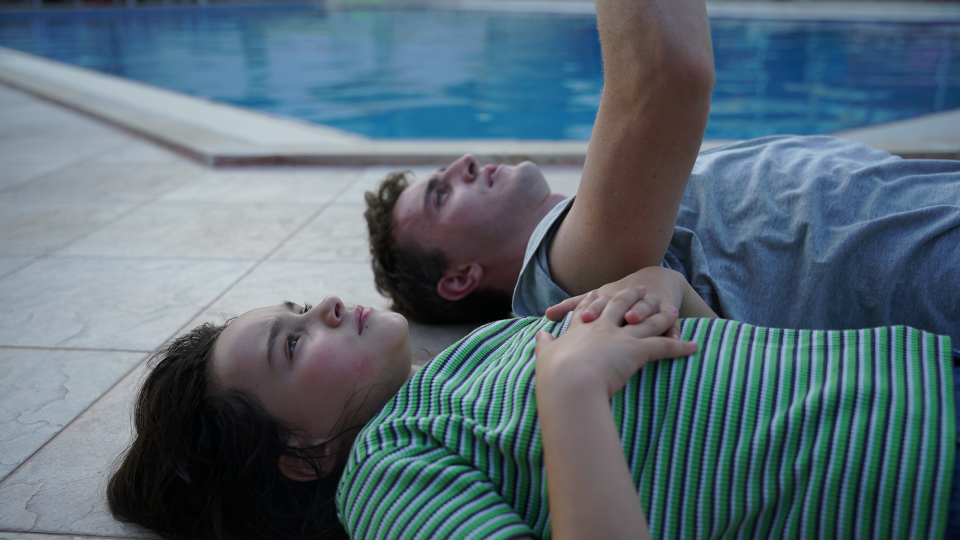Charlotte Wells on Memory, Perspective, and ‘Aftersun’

It’s a credit to the construction of Charlotte Wells’ first feature, “Aftersun”, that you can’t accurately describe it as the story of a young girl (Frankie Corio) and her father (Paul Mescal) on vacation together in Turkey in the late 1990s. It’s a story about a woman remembering the vacation she and her father took together, with both warm clarity and aching ellipses, mysteries that probably won’t ever be solved. The powers, failures, and textures of memory guide us through understanding Sophie and Calum, together and apart, and the film’s finds as breathtaking and visual a way to dramatize how each of us becomes someone else’s memory in the end.
It does this, partially, with a rave.
More from IndieWire
Wells joined the Filmmaker Toolkit podcast to talk about creating anchor points for memory within the story of the film, the joys of working with DV camcoder footage and the liminal place it sits between objective and subjective points of view, refining perspective and sense of memory in editing “Aftersun” together, finding immediacy within a specific time period through the look of the film, and even more.
Listen to the entire discussion below or read on for excerpts from the conversation — and to read more about Wells and the development of “Aftersun,” read IndieWire’s profile of the filmmaker here. To hear this and more conversations with your favorite TV and film creators, subscribe to the Toolkit podcast via Apple Podcasts, Pocket Casts, Spotify, or Overcast.
Partial Transcript Highlights Below:
Wells on How the Story Evolved Into One About Memory
As the project evolved away from something more conventional, whatever that means, in story and structure and became this other thing, this thing about memory, there were remnants of that earlier version that endured. And one of those elements that endured for a very long time was a dramatic tension derived from their relationship.
And the conventional arc of that relationship, as it was articulated to me, was as the story begins, their relationship is somehow false and tension builds and there is a break, and at the conclusion, their relationship is suddenly true, you know? And just the second that was articulated to me, I realized that was the opposite of what I wanted this film to be about.
I wanted this to be a relationship that was true from the very first frame, that it was a relationship based on understanding and respect and love, and that doesn’t mean that there is not some tension between them at points. There is, but it isn’t the primary tension of the film. And sometimes, when you hear feedback that is not what you’re trying to do, it is the most clarifying because in having a very strong reaction, it makes clear what is important to you, and sometimes that’s the way that that needs to come about.

A24
Wells on Shooting Digital Video Camcorder Footage
The DV was so special. I remember the first time that we hooked up on set, we did a test of it one afternoon at the end of the day, and it was just Frankie jumping into the pool, the scene where she jumps onto the [inflatable floater], which was quite specifically scripted. And we had playback on a monitor, and you’re seeing through this monitor in 2021 at this Turkish hotel on the coast, this image that really looks like it could be from the late ’90s, and it is so surreal and it’s so evocative – at least I think for people of around my age who have a relationship to that type of footage, whose own childhood may be captured to some degree on that format.
It was a really special moment and it was very freeing just to put the camera in the hands of the actors. My DP could stand back and see for the first time in those sequences what was happening on set and it was just a lot of fun. It wasn’t as free as I hoped it would be. I had an image of just the actors and me, and in fact, there’s still a hundred other people standing around and you still have a sun mixer and a boom operator. But still there was a lot of fun and freedom in those sequences. And there are some in the film that were instances of Paul, Frankie and I just roaming the streets of ?lüdeniz, the town that we were in. “Big Head” is the one that ended up in the film where [Calum’s] saying that she has a big head and she says that’s a bit rude. That wasn’t scripted. That was just them messing around and they were so fun to capture.
I don’t know why I incorporated them into the film. Well, I do. There is a one tape of DV footage of me around that age. I’m playing chess with my dad and his friend, and we were all cut off at our collarbone. So it was just everybody’s body but not their heads. And it’s utterly surreal and totally banal. My dad and his friend are having a conversation about work. Music is playing in the background and it’s just voices, and it’s so strange to have as a record of that moment, and I found myself writing it into the film.
The opening of the script was the opening of that tape, which is this blurry morphing of white to cream to blue. I assume the cap was on the camera and different objects were passing in front of it. And I just wrote exactly as I saw, and it evolved on the page and it seemed insane. But it also was this amazing tool for point of view and allowed each character to see one another and then to see playback of the other’s direct point of view. And it was just a really interesting addition to that aspect of the film and also provided story or anchor points for memory. Like, these are things that happened at one point. I wondered about shooting that footage with different actors, which I think would’ve been insane, which is why I didn’t do it. But those are the kind of ideas floating through my head about how you separate this record of fact, even though [it’s] seen through one person’s eye.

Courtesy of A24
Wells on Creating Texture in the Film
I think to do that well, like Edward Yang, in looking at images from, “Yi Yi,” those are just so perfectly captured and designed and the time that must go into setting those shots up cannot be underestimated, which I think ultimately we did, and they’re the first thing to go. They seem unimportant. People are quick to strike them from the shot list as you move through your day and aren’t capturing what you need. But you do need them, and it is difficult to find the time to capture images that are so important to the texture of the film. And I always saw images like that as existing kind of out of time in many cases, and are so integral to this idea of memory. You know, you lost your bag in a grassy area as you walk to a corridor to reach your hotel room, and somehow that bag is still there because where else would it be? It was interesting working out how that fit together once we got into the edit.
The Filmmaker Toolkit podcast is available on Apple Podcasts, Spotify, Overcast, and Stitcher. The music used in this podcast is from the “Marina Abramovic: The Artist Is Present” score, courtesy of composer Nathan Halpern.
Best of IndieWire
Sign up for Indiewire's Newsletter. For the latest news, follow us on Facebook, Twitter, and Instagram.
Solve the daily Crossword

